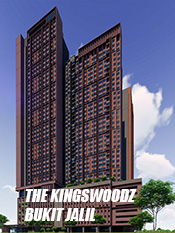
Yeang: ‘Green buildings provide better cost savings in the long run.’
As a world-renowned eco-architect, Datuk Kenneth Yeang truly believes that buildings with environmental features are more than just about design and aesthetics.
To him, there are definitely pure economic benefits from having green structures.
“There is definitely a strong commercial case for green buildings,” he tells StarBizWeek in an interview.
“Green buildings provide better cost savings in the long run and provide better indoor air quality. With an environment that’s less polluted, there is a lower chance of your staff getting sick, which also means better productivity for your business.”
Yeang feels that the benefits of green buildings are still not properly communicated to the general public.
“The benefits of investing in green buildings needs to be communicated better to investors and end-users.
“Unless this is done, banks would not want to provide loans for such projects and developers would won’t want to be involved in it.
“At the end of the day, it’s about education.”
Yeang also says that there are too many buildings that are rated green but “don’t look green enough.”
“You may have a structure that is rated green but it does not portray that image and just looks like any other building around.
“Developers (of green buildings) should be more explicit with their designs in portraying it (that it is a green building) because the public expects it.”
Yeang was recently bestowed the prestigious Merdeka Award in the Environment Category for his outstanding contribution to the development of design methods for ecological design and environmental planning.
No stranger to winning accolades for his work, Yeang is humble about his latest achievement.
“People ask me how I feel, but I’m still the same person I’ve always been.”
Yeang, who pioneered the application of ecological principles to skyscrapers for more than three decades, has received awards for landmark buildings that include the Spire Edge Tower in Delhi, India, the National Library in Singapore, as well as the DiGi Technical Operation Centre in Subang Jaya.
Yeang says Malaysia is ahead of many countries in promoting green buildings, adding however that there is more that can be done.
“We have a Green Building Index and the Government also provides tax incentives for green buildings.
“In the last 10 years, there has been an increase in demand for green buildings.”
T.R. Hamzah & Yeang Sdn Bhd was co-founded in 1976 with Tengku Robert Hamzah in Kuala Lumpur.
The firm now has four offices in China, a sister office in Britain and associate offices in Japan and Australia. He says there are no immediate plans to expand further.
Three decades
The firm has been in existence over three decades, with projects in Europe, the United States and Asia. Key projects include the high-rise National Library Board building (Singapore), the 40-storey Eco-Tower at Elephant & Castle, the 24-storey IBM Building (Malaysia) and 15-storey Mesiniaga Building (IBM franchise) (Malaysia) and the Wirrina Cove Condominium (Australia).
Yeang considers the profession a business and an art and he feels that having business knowledge is essential to be a successful architect.
“Business knowledge is very important for an architect.
“After my first year (as an architect), I took up business classes in the evenings for two years.
“It was a big help. Architecture is not just an art, it’s a business as well.”
Yeang says he also took up a one week business course at the Harvard Business School in 2002 to hone his “business skills.”
“It cost me US$13,000 but it was worth it!
“In fact, I should have done it earlier! It changed my outlook and made me realise that architects are quite silly, really,” he enthuses.
Being conned
Yeang says that architects are so engrossed in their work that they fail to realise it when they are being conned!
He also notes that the architect profession is a stressful and competitive business – more so today than when he first started out.
“When I first started, there must have been 40 or 50 firms in Kuala Lumpur. Today, there are about 500!”
When not designing concepts for environment-friendly buildings, Yeang writes about them.
In 1997 he published what is considered the seminal book on skyscrapers – The Skyscraper: Bioclimatically Considered: A Design Primer. Yeang has already written 12 books.
In measuring success, Yeang says what clearly defines winners and losers is that winners “keep getting back up.”
“It does not mean that winners never lose. Winners lose too but the difference is that they always pick themselves up and continue fighting. Losers stay down and never get up,” he says.
By The Star










No comments:
Post a Comment